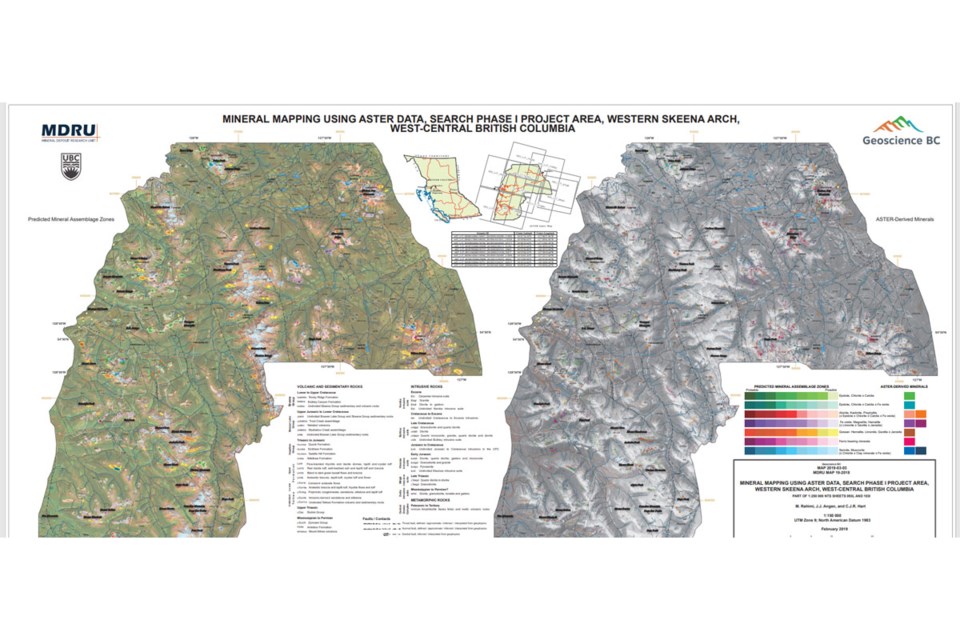A team of B.C. researchers has found previously-unknown mineral deposits in the Skeena Arch, roughly between Terrace and Houston, which may be similar to the productive Eskay Creek gold deposit.
A research partnership between Geoscience BC, the B.C. Geological Survey and UBC’s MDRU-Mineral Deposit Research Unit found Middle Jurassic volcanogenic massive sulphide (VMS) deposits in the area of northwest B.C.
"The findings and new knowledge generated by this project highlight that British Columbia’s Northwest Region may have a continued role to play in critical minerals and metals exploration and development,” Geoscience BC vice president of minerals Chirsta Pellett said in a statement released earlier this month. “This public information will be useful for future exploration in the area.”
The Skeena Arch area is home to several current and historical mines, including the Endako molybdenum mine and the Huckleberry, Bell and Granisle copper-gold mines. But the geological processes which caused the concentration of mineralized zones is only partially understood, according to Geoscience BC.
Geoscience BC data from an airborne magnetic survey was used by researchers from UBC and the B.C. Geological Survey to update geological maps and further improve scientific understanding of the processes that led to the formation of mineralization deposits.
The survey area stretched from roughly 30 km east of Terrace to 75 km southwest of Smithers.
The maps and final research reports are available online.



